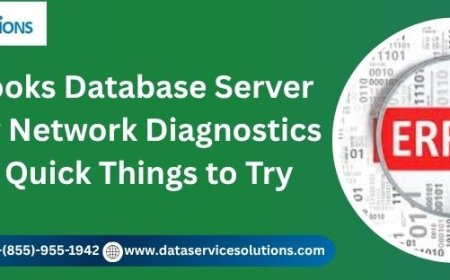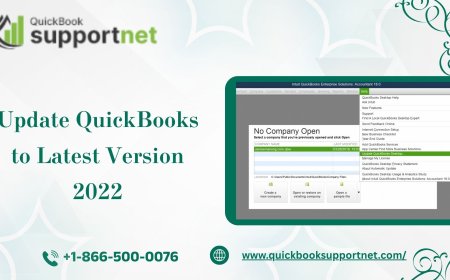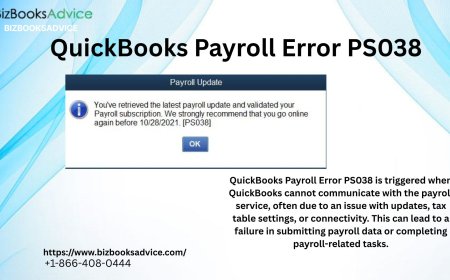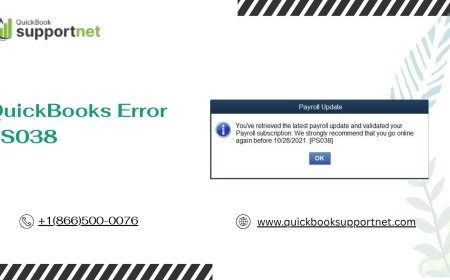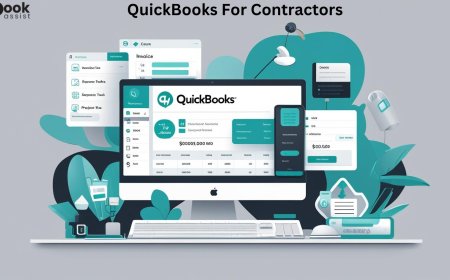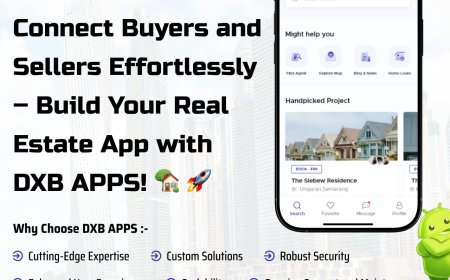Top 6 Mobile App Frameworks to Watch in 2025
The landscape of Mobile App Development is in a constant state of flux, driven by rapid technological advancements and evolving user expectations. As we move further into 2025, developers are increasingly seeking frameworks that offer speed, efficiency, cross-platform compatibility, and the ability to build sophisticated, high-performance applications. The choice of framework is a foundational decision that impacts everything from development time and cost to app performance and future scalability.
In this dynamic environment, certain frameworks are poised to dominate, pushing the boundaries of what's possible on mobile devices. They empower developers to create seamless, engaging experiences that cater to a diverse user base across multiple operating systems. Understanding these leading frameworks is crucial for anyone involved in crafting the next generation of mobile applications.
Here are the Top 6 Mobile App Frameworks to Watch in 2025:
1. Flutter (Google)
Flutter continues its meteoric rise, establishing itself as a powerhouse in cross-platform Mobile App Development. Developed by Google, it offers a unique approach to building natively compiled applications for mobile, web, and desktop from a single codebase.
-
Key Strengths:
-
Native Performance: Flutter directly compiles to native ARM code, offering exceptional performance that often rivals native apps. Its Skia graphics engine allows for pixel-perfect control over the UI, ensuring consistent design across platforms.
-
Hot Reload & Hot Restart: These features significantly speed up the development cycle, allowing developers to see changes reflected instantly without restarting the app.
-
Rich Widget Library: Flutter boasts a comprehensive set of pre-built, customizable widgets that follow Material Design (for Android) and Cupertino (for iOS) guidelines, enabling rapid UI development.
-
Single Codebase: Write once, deploy everywhere. This drastically reduces development time and cost compared to maintaining separate iOS and Android codebases.
-
Growing Ecosystem & Community: Backed by Google, Flutter benefits from extensive documentation, a vibrant developer community, and a rapidly expanding ecosystem of packages and tools.
-
-
Ideal Use Cases: High-performance apps requiring custom UIs, animations, and complex data rendering. Suitable for startups and enterprises alike aiming for efficient cross-platform deployment.
2. React Native (Meta)
Still a dominant force in cross-platform development, React Native continues to be a go-to choice for developers familiar with JavaScript and React. It allows building truly native mobile apps using a web-like development experience.
-
Key Strengths:
-
JavaScript/React Familiarity: Leverages JavaScript, a widely adopted language, and the popular React library, lowering the learning curve for web developers transitioning to mobile.
-
Code Reusability: Significant code sharing between iOS and Android versions, and even with web applications using React.
-
Native Components: Unlike some hybrid frameworks, React Native renders actual native UI components, contributing to a native look and feel and excellent performance.
-
Large, Mature Community: Backed by Meta, React Native has a massive and active community, offering abundant resources, third-party libraries, and strong support.
-
Fast Refresh: Similar to Flutter's hot reload, this feature speeds up iteration cycles during development.
-
-
Ideal Use Cases: Social media apps, e-commerce platforms, and applications requiring high interactivity and a strong community backing. Excellent for teams already proficient in the React ecosystem.
3. Kotlin Multiplatform Mobile (KMM)
While not a full-stack UI framework like Flutter or React Native, KMM is gaining significant traction for its ability to share business logic, networking, and data layers across platforms while allowing native UI development.
-
Key Strengths:
-
Shared Business Logic: Developers can write core application logic (e.g., networking, data validation, analytics) once in Kotlin and share it across Android (natively) and iOS (via Kotlin/Native compilation).
-
Native UI: Unlike other cross-platform options, KMM encourages building native UIs using Jetpack Compose (Android) and SwiftUI (iOS), ensuring a truly platform-specific user experience.
-
Leverages Existing Native Skills: Teams with existing Android (Kotlin) and iOS (Swift/Objective-C) expertise can adopt KMM to improve efficiency without abandoning their UI knowledge.
-
Interoperability: Seamless integration with existing native codebases, making it easy to introduce KMM into ongoing projects incrementally.
-
Concise and Safe Language: Kotlin is known for its modern features, null safety, and conciseness, reducing boilerplate code and improving developer productivity.
-
-
Ideal Use Cases: Applications where a native look and feel are paramount, but significant logic can be shared. Enterprises looking to optimize development for complex apps with large native codebases.
4. Swift (for iOS Native)
Despite the rise of cross-platform solutions, native iOS development with Swift remains a top choice for apps requiring absolute peak performance, deepest integration with Apple's ecosystem, or highly specialized features.
-
Key Strengths:
-
Unmatched Performance & Optimization: Apps built with Swift leverage direct access to iOS APIs and are optimized specifically for Apple hardware, offering the best possible performance and responsiveness.
-
Full Access to Platform Features: Immediate access to the latest iOS features, APIs, and hardware capabilities (e.g., Face ID, ARKit, HealthKit, Neural Engine).
-
Seamless User Experience: Native apps inherently provide the most consistent and intuitive user experience according to Apple's Human Interface Guidelines.
-
Robust & Safe Language: Swift is designed for safety, performance, and modern software design patterns, reducing common programming errors.
-
Strong Apple Ecosystem Support: Excellent tooling (Xcode), comprehensive documentation, and direct support from Apple.
-
-
Ideal Use Cases: Apps requiring maximum performance (e.g., high-fidelity games, advanced photo/video editing), deep hardware integration, or those exclusively targeting the iOS user base. A Mobile App Development strategy often chosen for premium, highly specialized iOS-only applications.
5. Java/Kotlin (for Android Native)
Similarly, for Android, developing natively with Java or Kotlin continues to be vital for applications demanding unparalleled performance and deep Android system integration. Kotlin is increasingly the preferred language for modern Android development.
-
Key Strengths:
-
Superior Performance & Integration: Native Android apps are highly optimized for the Android operating system and devices, providing the best performance, battery efficiency, and system resource management.
-
Full Access to Android SDK & Features: Direct access to all Android APIs, hardware components (e.g., sensors, NFC), and system services.
-
Flexibility & Control: Unrestricted control over the app's architecture and performance characteristics, allowing for highly customized solutions.
-
Large Ecosystem & Community: A vast developer community, extensive documentation from Google, and a wealth of libraries and tools (e.g., Android Studio, Jetpack Compose).
-
Kotlin Advantages: Kotlin offers modern language features, conciseness, null safety, and better expressiveness compared to Java, leading to more robust and maintainable code.
-
-
Ideal Use Cases: High-performance gaming, complex enterprise applications, system-level utilities, or apps requiring extensive integration with Android-specific hardware and software features. Essential for developing high-quality, feature-rich Android experiences.
6. Ionic
Ionic remains a popular choice for hybrid app development, allowing web developers to leverage their existing skills to build cross-platform mobile apps.
-
Key Strengths:
-
Web Technology Stack: Uses standard web technologies (HTML, CSS, JavaScript/TypeScript, with popular frameworks like Angular, React, Vue), making it accessible to a large pool of web developers.
-
Rapid Development: Fast prototyping and development cycles due to web component reusability and a rich library of pre-built UI components.
-
Single Codebase & PWA Support: Builds for iOS, Android, and also excels at creating Progressive Web Apps (PWAs) from a single codebase.
-
Native Features via Cordova/Capacitor: Utilizes Apache Cordova or Ionic's own Capacitor to access native device features and APIs through plugins. Capacitor offers a more modern, native runtime interface.
-
Strong Community: A well-established framework with a large and active community, offering ample support and resources.
-
-
Ideal Use Cases: Content-heavy apps, basic utility apps, internal enterprise tools, or MVPs (Minimum Viable Products) where speed to market and budget efficiency are priorities, especially for teams with strong web development backgrounds.
Conclusion
The year 2025 highlights a clear trend in Mobile App Development: a continuous push towards efficiency, performance, and user experience, irrespective of the underlying platform. While native frameworks like Swift and Kotlin continue to offer unparalleled performance and deep integration, cross-platform powerhouses like Flutter and React Native provide compelling alternatives for broader reach and accelerated development cycles. Kotlin Multiplatform Mobile offers a compelling middle ground, balancing shared logic with native UI. Meanwhile, Ionic remains a strong contender for web-centric teams aiming for hybrid solutions and PWAs. The choice among these top frameworks will depend on specific project requirements, team expertise, performance needs, and strategic business goals, each offering unique advantages to shape the mobile experiences of tomorrow.
Related Posts
Transparency in 82 Lottery Colour Trading Platforms
lottery82 Jul 16, 2025 5













